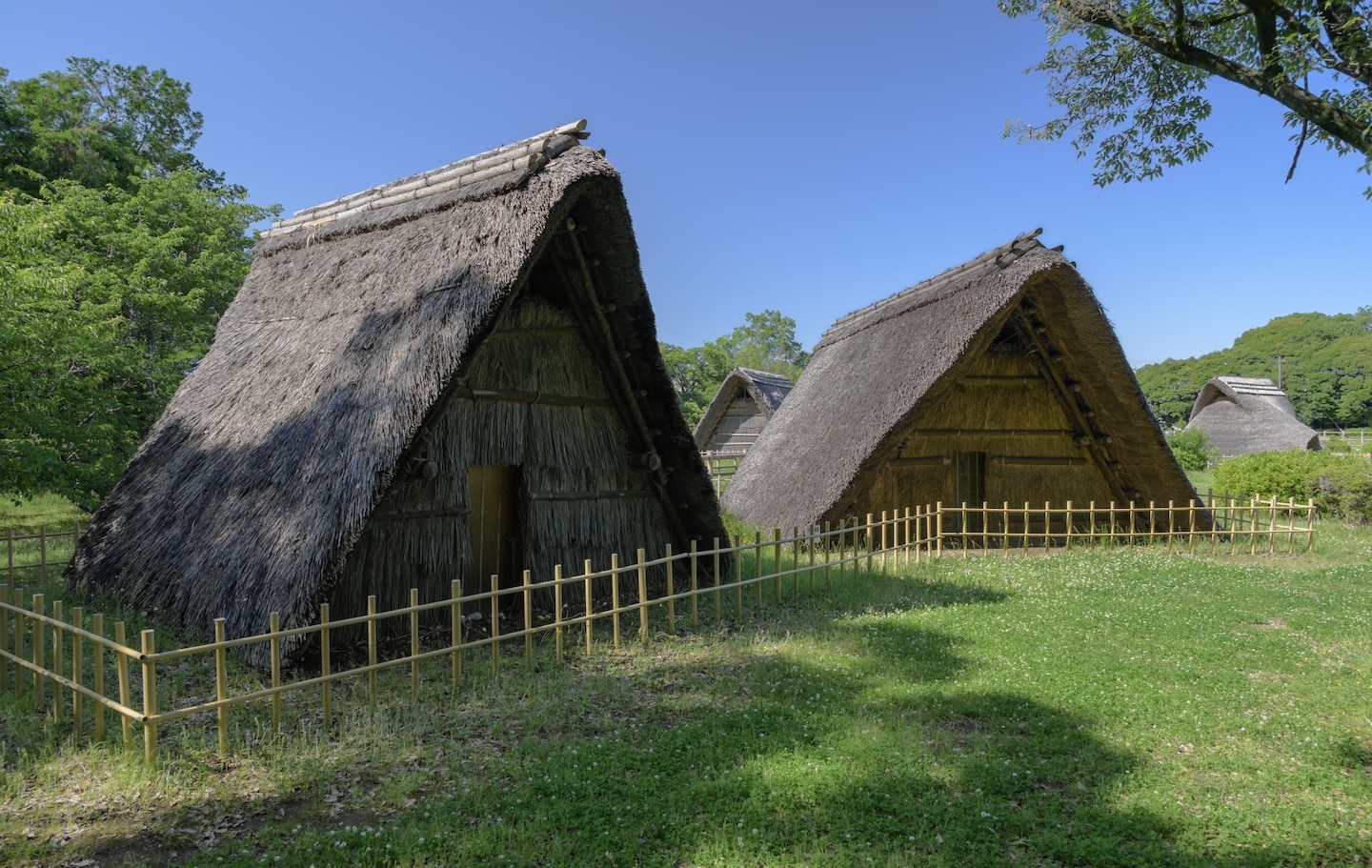From Ancient Ruins to 20th Century Homes: Five Historical Parks in Japan
So you’ve learned of Japan’s history from pop culture hits like Rurouni Kenshin and Demon Slayer. Japan has a number of sites that recreate those days with reconstructed buildings, neighborhoods and other details. Elizabeth Sok picks five of Japan's best historical parks, where you can immerse yourself in past era lifestyles.
By Elizabeth SokThe Ancient People of Jomon: Sannai-Maruyama Site
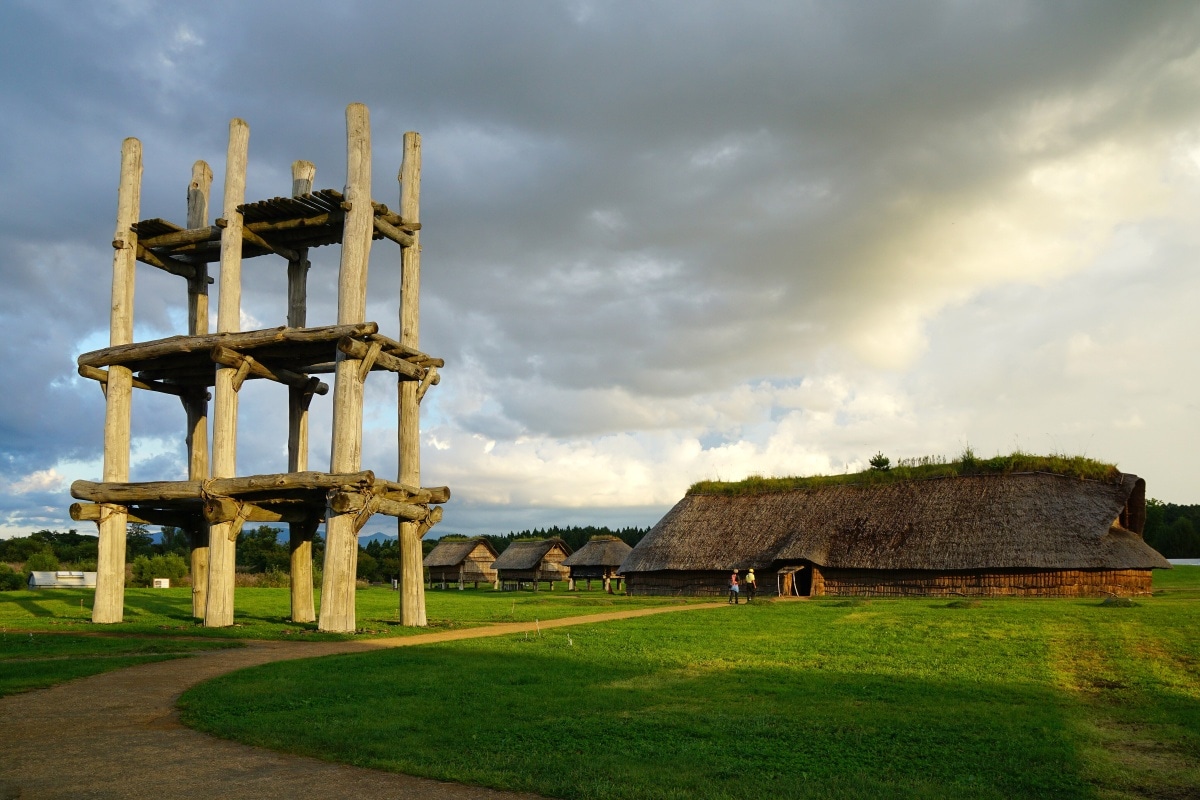
https://commons.wikimedia.org/wiki/File:140913_Sannai-Maruyama_site_Aomori_Japan01bs6bs6.jpg
At the end of the last ice age some 12,000 years ago, the last land bridge that linked the Japanese archipelago to the Asian mainland was cut as glaciers melted and sea levels rose. Over the last millenia of this glacial period, the flora and fauna began to develop independently from the rest of East Asia and the humans living on the Japanese islands also adapted to the changing environments. The Jomon people (14,000 BCE–300 BCE) were the most dominant group on the main islands, their societies blending the characteristics of hunter-gatherers and farmers.
Discovered by accident during the construction of a new baseball stadium in Aomori Prefecture in 1992, the Sannai-Maruyama Site covers about 25 hectares and contains hundreds of archaeological artifacts that help us to better understand Jomon life and culture. It was extensively excavated and transformed into a public historical park in 1995, and along with other Jomon sites in Hokkaido and the Tohoku region, now forms the Jomon Prehistoric Sites in Northern Japan, designated a World Heritage Site in 2021.
"The Sanmaru Museum details life during the Jomon period, complete with artifacts, displays and explanations"
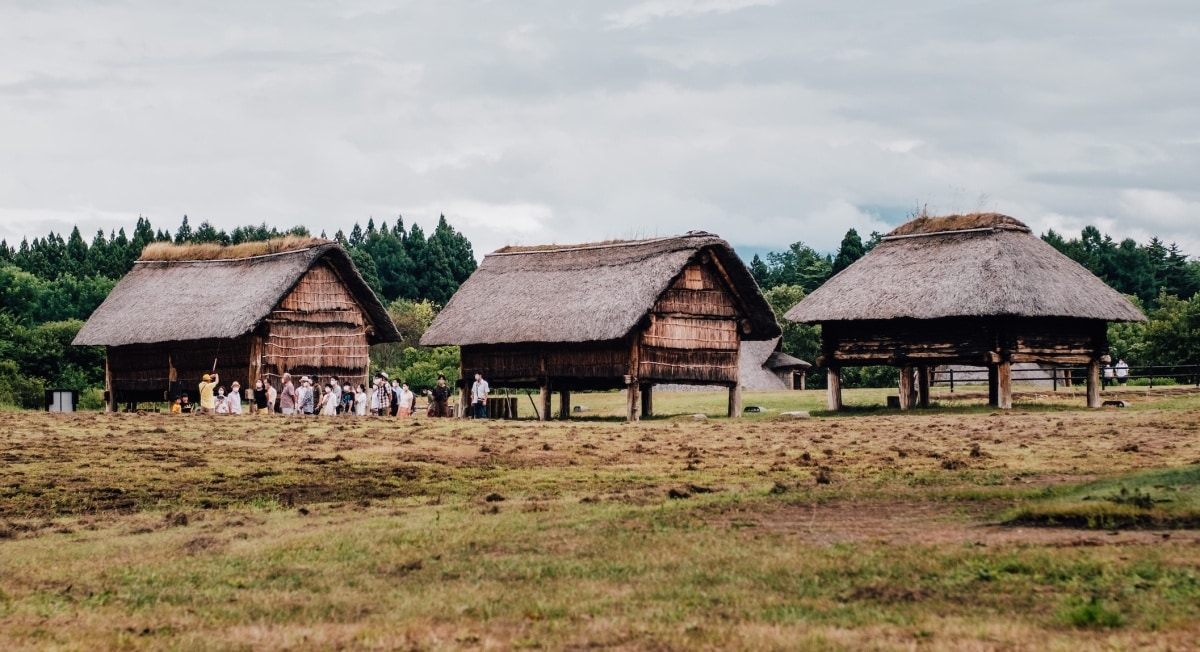
The Sannai-Maruyama Site allows visitors to explore a settlement that existed during the Early and Middle Jomon periods from around 3,900 BCE to 2,200 BCE. You can walk through several reconstructed buildings, including 15 pit dwellings that may have been used as homes, and large pit buildings measuring about 32 meters in length that could have served as places of assembly.
The Sanmaru Museum at the site details life during the Jomon period, complete with artifacts, displays and explanations, including over 5,000 pieces of Jomon pottery. Between July and September there are ongoing excavations open to the public and children have the opportunity to get their hands dirty doing real archaeological work. Lectures and exhibits during this time also inform visitors about the most up-to-date finds.
Website: https://sannaimaruyama.pref.aomori.jp/english/
Admission:
Adults: ¥410
High school and university students: ¥200
Junior high school students and younger: free
Hours:
October–May: 9 am–5 pm
June–September: 9 am–6 pm
Closed on the 4th Monday of the month and December 30–January 1
Japan’s Largest Village during the Roman Empire: Yoshinogari Historical Park
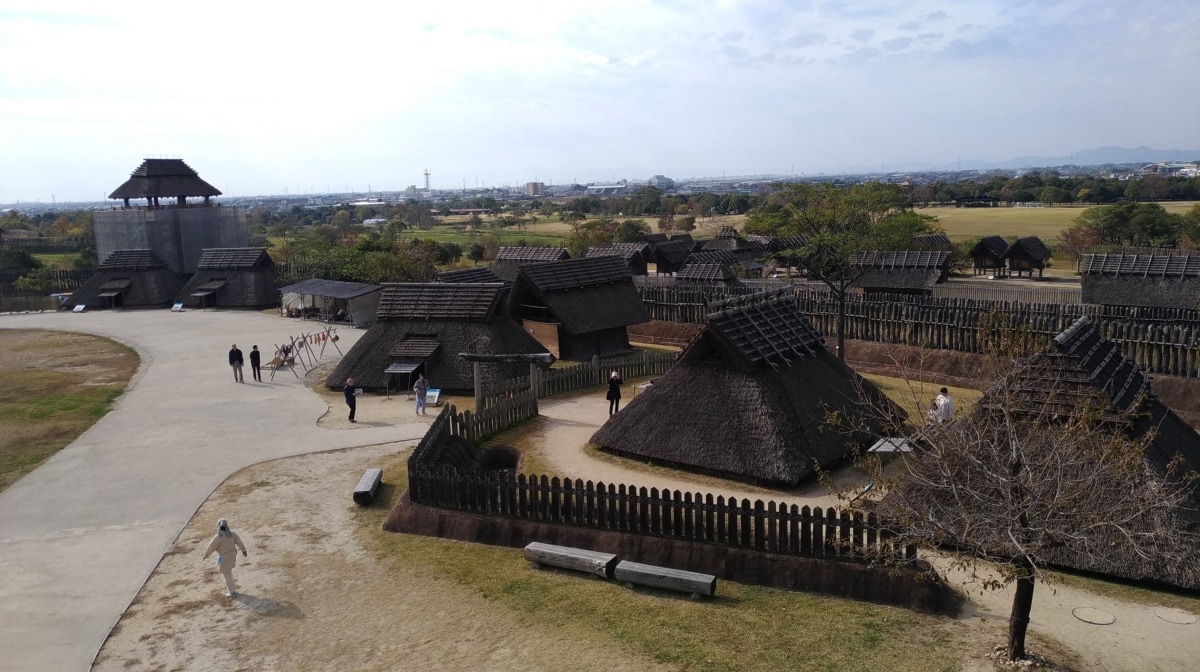
Throughout the first millennium BCE, several innovations were introduced to the Japanese archipelago. While the Yayoi culture was named after the area near Tokyo where artifacts were first unearthed in the late 19th century, its origins seem to have been based in northern Kyushu before spreading east to Honshu. Wet rice farming and metallurgy were among the techniques that arrived via the Korean Peninsula and China. Yayoi culture emerged from earlier Jomon societies especially between 300 BCE and 300 CE, although there is debate that such developments began centuries earlier. Rice cultivation led to more sedentary communities and higher populations and the increasingly stable food source and metalworking became a significant factor in concentrating wealth into the hands of a small elite.
"The massive moat surrounding the village, the largest in Japan at the time, is evidence of increasing conflicts with neighboring communities."

Located in Saga Prefecture’s Kanzaki region, Yoshinogari Historical Park transports visitors back in time to the Yayoi period. The site sprawls over 70 hectares and contains several large areas for exploration. Excavations have unearthed hundreds of artifacts, and many buildings have been reconstructed based on archaeological evidence, giving a comprehensive snapshot of life during the Yayoi era. The massive moat surrounding the village, the largest in Japan at the time, is evidence of increasing conflicts with neighboring communities.
Visit the Southern Inner Enclosure to find the Ruler’s Residence, Cooking House, and impressive defenses designed to keep Yayoi leaders safe. Over at the largely undefended Minami no Mura, where commoners likely lived, you’ll see a few storehouses and dwellings. In addition to this recreation of Yayoi culture, visitors can enjoy recreational spaces for picnicking and sports as well as playgrounds and miniature golf courses. Yoshinogari Historical Park offers a fascinating glimpse of one of the most significant periods in Japanese history.
Website: https://www.yoshinogari.jp/en/
Admission:
Junior high school aged students and younger: free
Fifteen and older: ¥460
Senior citizens: ¥200
Hours:
September 1–May 31: 9 am–5 pm
June 1–August 31: 9 am–6 pm
Open everyday except December 31 and the third Monday and Tuesday in January
In Service of a Feudal Goddess: Saiku Heian Era Park
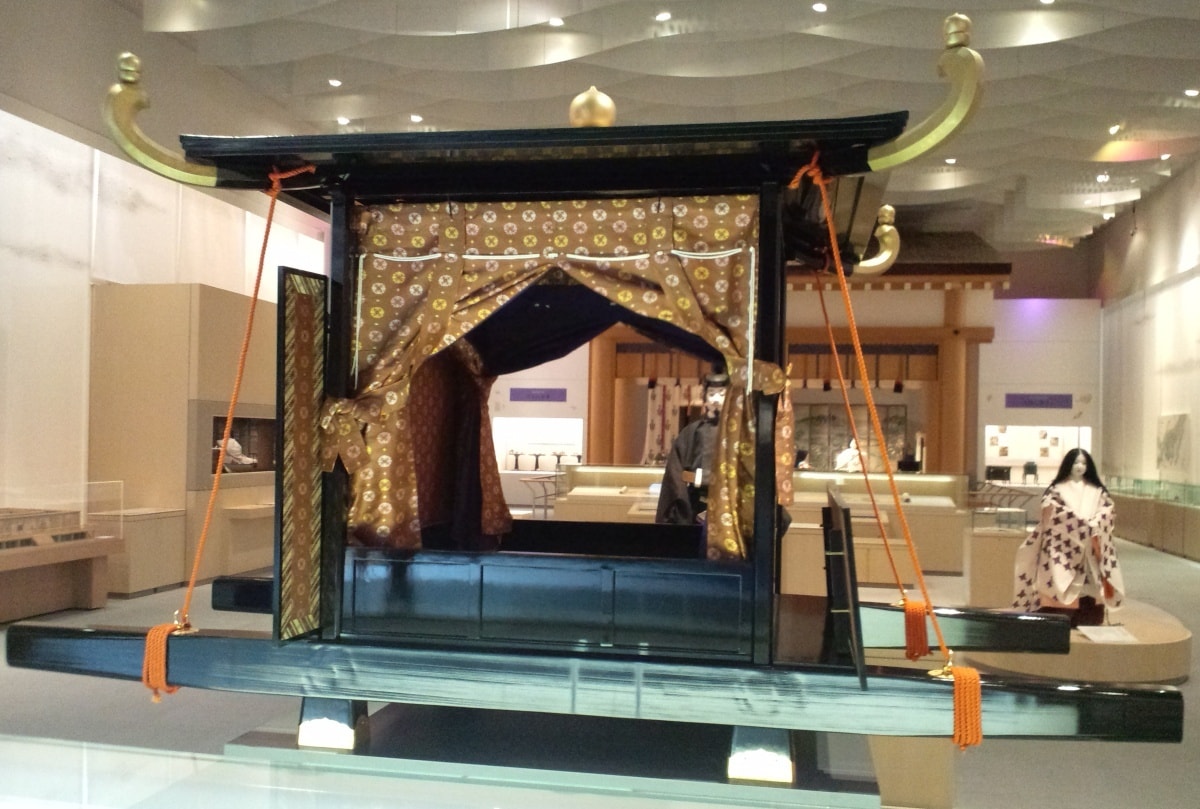
https://commons.wikimedia.org/wiki/File:Saikū_Historical_Museum_-_Display_item08_-_The_portable_shrine_of_Saiô_%22Sôkaren%22.jpg
One of the most romanticized periods in Japanese history, the Heian era (794–1185) saw the blossoming of Buddhism, the flourishing of literature and arts and the development of court culture. Although the imperial family was based in the new capital of Heian-kyo (modern day Kyoto), much of the power and influence of the period lay with the Fujiwara clan, aristocratic elites who had close ties to many emperors and powerful figures over the centuries.
Some of the key figures from the Heian era are the Saio princesses—unmarried females of the imperial family sent to serve one of the most important deities, Amaterasu. In a small town called Saiku near Ise Grand Shrine where Amateraru is enshrined, these women would compose traditional waka poems, collect shells along the shoreline, and wait to be called back to Kyoto. They would make the journey to Ise Shrine three times a year for ritual purposes. The Saio princesses were immortalized in several chapters in The Tale of Genji, the literary masterpiece believed to be the first Japanese novel.
"Visitors can also dress in a 12-piece kimono and take part in a typical Saio experience."
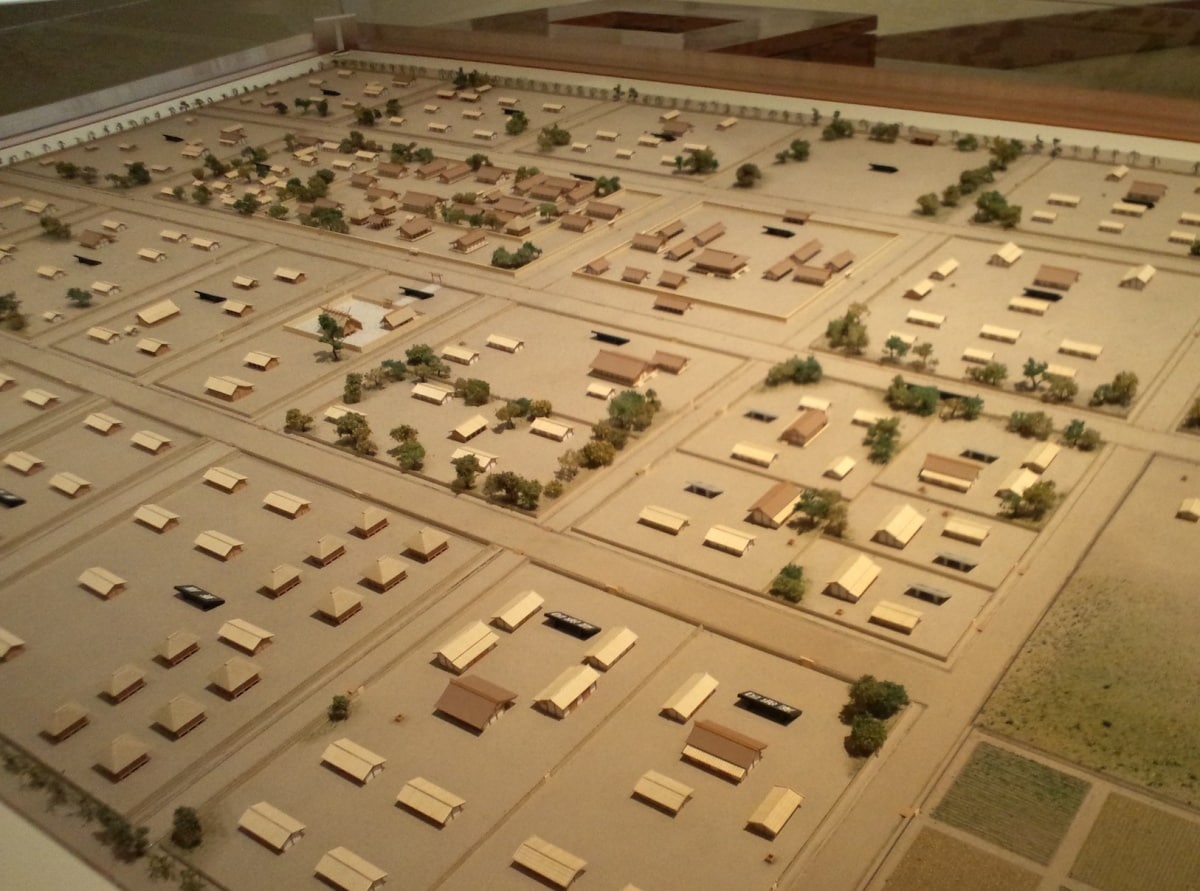
Saiku Heian Era Park is a historical recreation in the city of Kuwana that stretches about two kilometers from west to east and almost a kilometer from north to south. Based on archaeological evidence from the site as well as comparative studies of contemporary areas in Kyoto and Nara, designers have reconstructed several buildings that lay at the center of life in ancient Saiko. All three structures—the Seiden, Nishiwakiden, and Higashiwakiden—were likely used for rituals, feasts and other administrative duties in the service of the Saiku palace. In addition to exploring the interiors and exteriors of these buildings, you can view a 1:10 scale model of the entire palace grounds. Visitors can also dress in a 12-piece kimono and take part in a typical Saio experience. The site also hosts lectures and concerts throughout the year. As a bonus, Saiku Heian Era Park holds a number of annual festivals, including the Saio Festival on the first weekend of June which reenacts the Saio princesses and their procession arriving at Saiku.
Website: https://www.bunka.pref.mie.lg.jp/saiku/p0048200001.htm
Admission:
Free
Hours:
March–October: 9:30 am–5 pm
November–February: 9:30 am–4 pm
Feudal Japan's Link to the World: Dejima
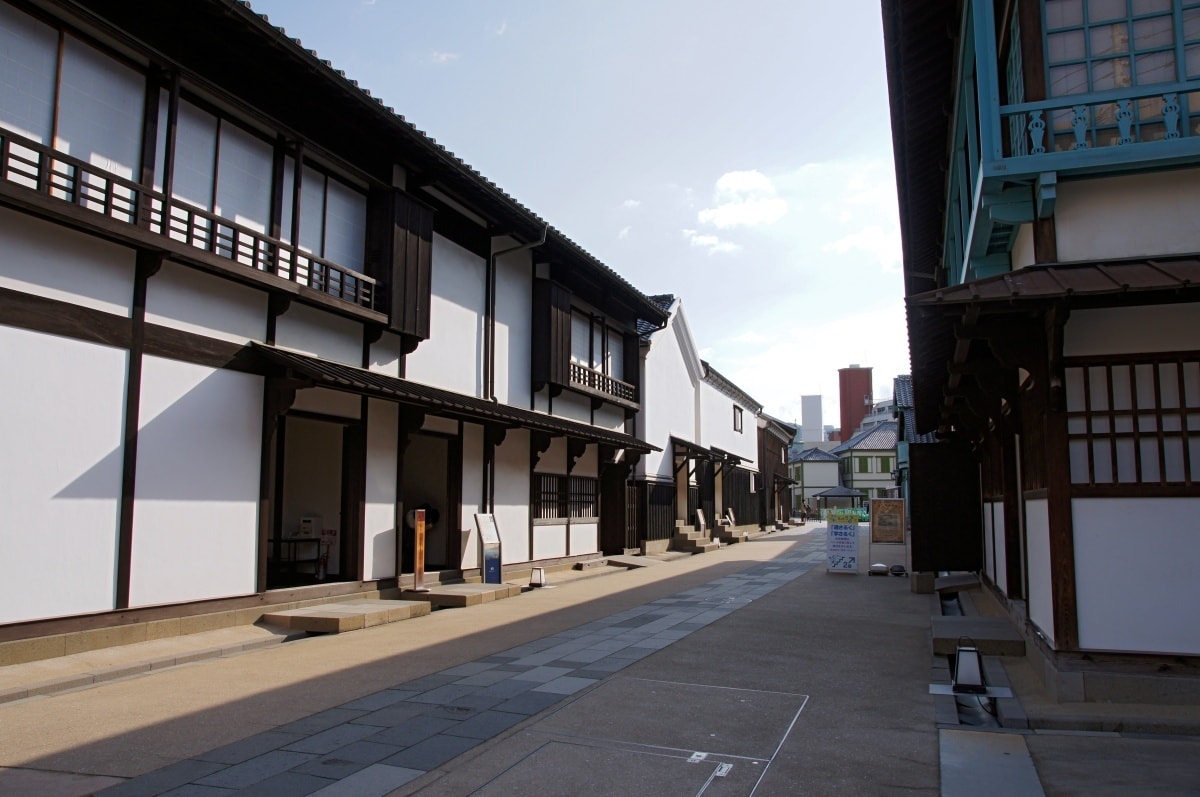
https://commons.wikimedia.org/wiki/File:Dejima_Nagasaki_Japan23n.jpg
Japan had contact with other nations for more than a thousand years before the first European ships docked in the port of Nagasaki in the 16th century. But the spread of Christianity began to worry the Tokugawa shogunate that began its rule in 1600. Beginning in 1639, Japan put in force a period of seclusion that lasted to the mid-19th century. The decree didn’t cut the archipelago off entirely from foreign powers, however, as shown in full display in Nagasaki’s historical recreation of the port of Dejima. This area showcases the limited access that the Dutch enjoyed with Japan at a time when other European empires were largely forbidden from stepping foot on the island chain.
"The First Ship Captain’s Quarters once housed the captains of the Dutch ships that docked in Nagasaki"
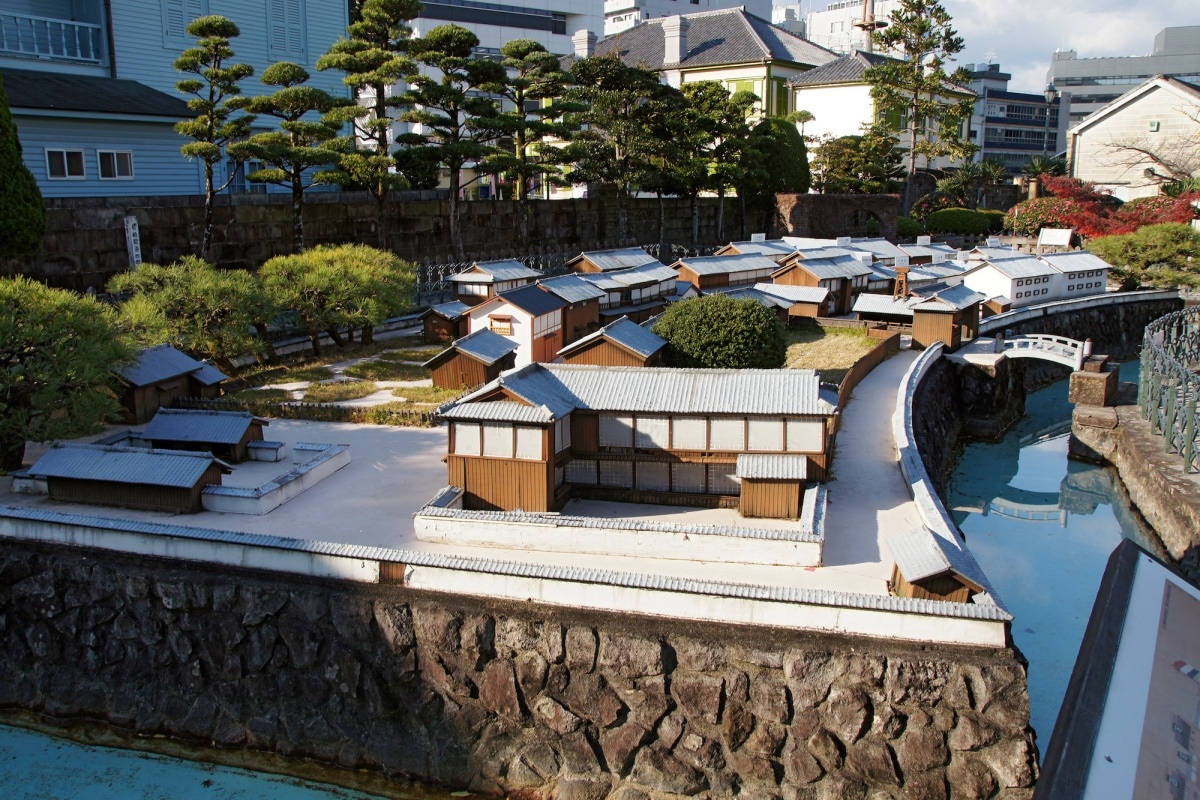
Walking through Dejima today is to follow in the footsteps of Dutch and Japanese who lived and worked there. Several buildings dating back to the 1820s have been restored in recent decades. The First Ship Captain’s Quarters once housed the captain of Dutch ships that docked in Nagasaki, and the two-story building has been outfitted with replicas of the warehouse and living spaces down to the beds, tables and factory tools. The Kitchen building where Dutch workers prepared meals for Dejima residents is also from this period.
The few Japanese interpreters and staff who were allowed onto the site occasionally took samples of the European cuisine back to their homes in Nagasaki. The remaining structures dutifully preserve life in Dejima during the late Edo and early Meiji periods and include spaces dedicated to entertaining Japanese guests and storing valuable commodities, such as sugar and cloves. All buildings throughout Dejima include displays, images and other historical information that help to contextualize the artifacts and spaces you will encounter on your visit.
Website: https://nagasakidejima.jp/english/
Admission:
Adults: ¥520
High school students: ¥200
Junior high and elementary school students: ¥100
Hours:
Open all year round from 8 am to 9 pm
A Neighborhood Stroll Through Recent Centuries: Edo-Tokyo Open Air Architectural Museum
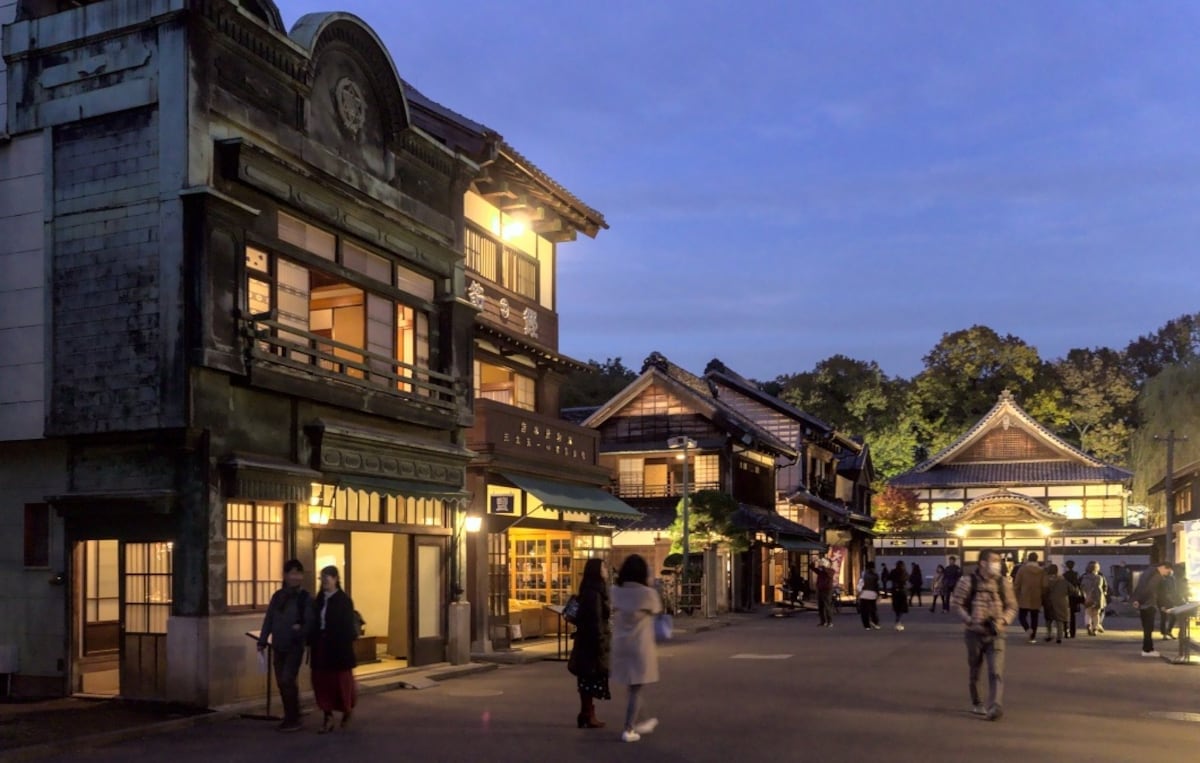
https://commons.wikimedia.org/wiki/File:Edo-Tokyo_Open_Air_Architectural_Museum_PB252276.jpg
Tokyo and its former iteration, Edo, were frequently devastated by natural disasters, war, and transformed by modernization and urban change, so many historical buildings were destroyed. Starting in 1991, with 12 reconstructed buildings on about seven hectares of land, the Edo-Tokyo Open Air Architectural Museum opened in the west end of the city. The aim was to relocate and preserve buildings from destruction, breathing new life into the structures while educating visitors about Tokyo’s past lives. Over the years, additional buildings have been added to the space and and today, over thirty structures have been organized into small neighborhoods complete with streets across three zones: East, West, and Central.
"In early April, stop by one of the 19th-century residences to see the weeping cherry blossoms flowering out front."
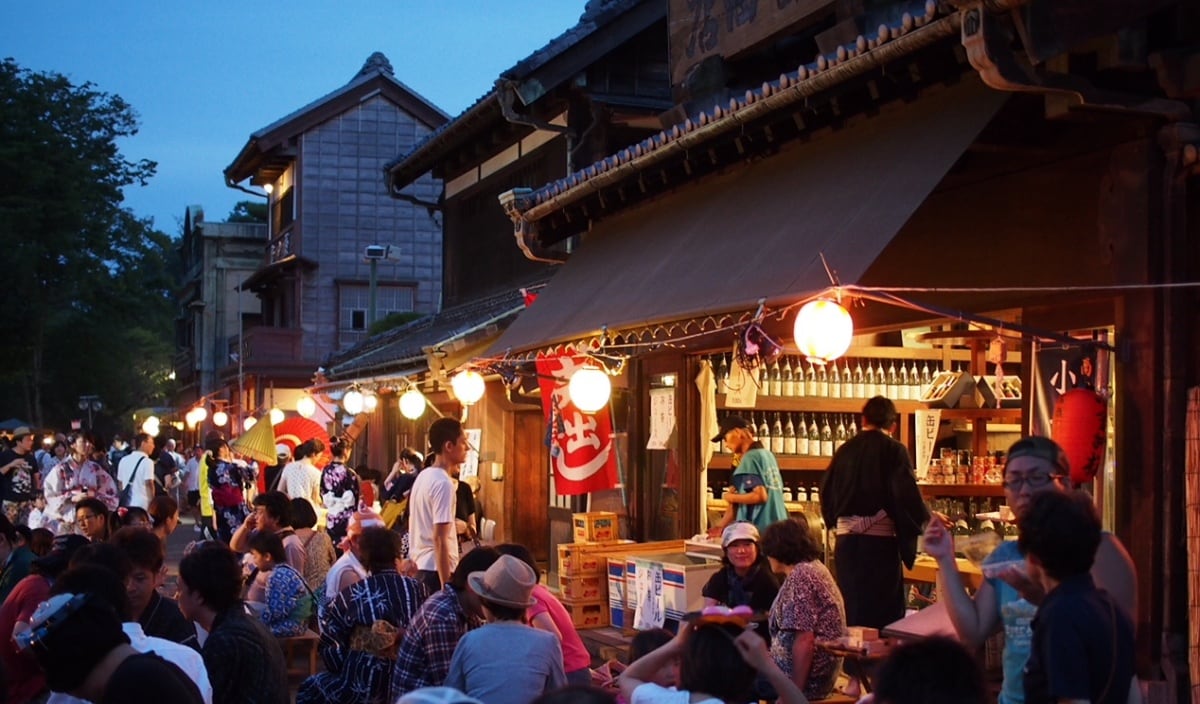
Each building has been faithfully restored and visitors can go inside to discover meticulously recreated interiors. On Yamanote Street in the West Zone, check out the Farmhouse of the Yoshino Family, one of the oldest at the museum, dating back to the late Edo period. For early examples of Western-Japanese architectural fusions, head over to the House of Koide built in 1925 by Japanese architect Horiguchi Sutemi, one of the leading figures of the modernist movement.
In addition to learning about the history of these buildings and the people that once lived here, visitors have a chance to enjoy them in seasonal variations. In early April, stop by the late 19th-century residence of Hachirouemon Mitsui to see the weeping cherry blossoms flowering out front. Visitors making the trip in late November should bask in the changing autumn leaves in the garden of the House of Korekiyo Takahashi and Farmhouse of the Tenmyo Family. With plenty of lived-in and worked-in homes and businesses, the Edo-Tokyo Open Air Architectural Museum is a must-see for history and architecture buffs.
Website: https://www.tatemonoen.jp/english/
Admission:
Adults: ¥400
College and university students: ¥320
High school and junior high school students: ¥200
Junior high school students (residing in Tokyo) and younger: free
Senior citizens: ¥200
Hours:
April–September: 9:30 am–5:30 pm
October–March: 9:30 am–4:30 pm
Closed on Mondays and between Christmas and New Year


